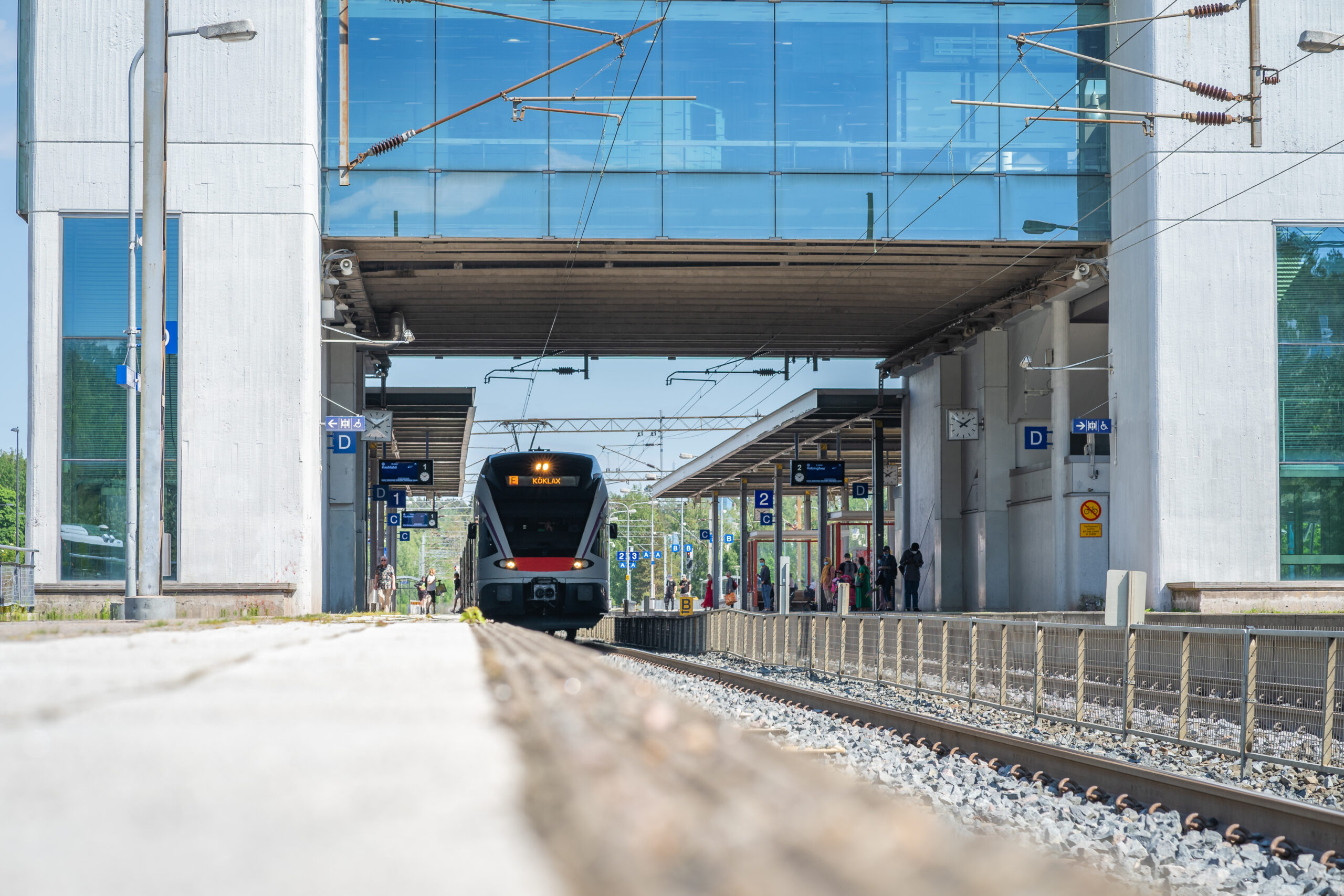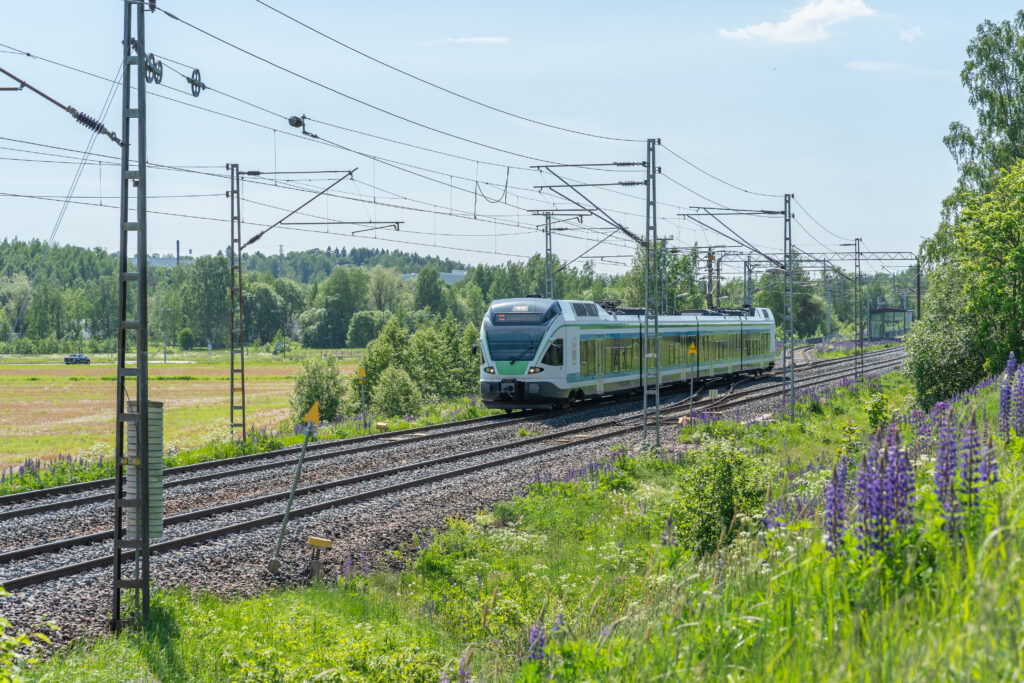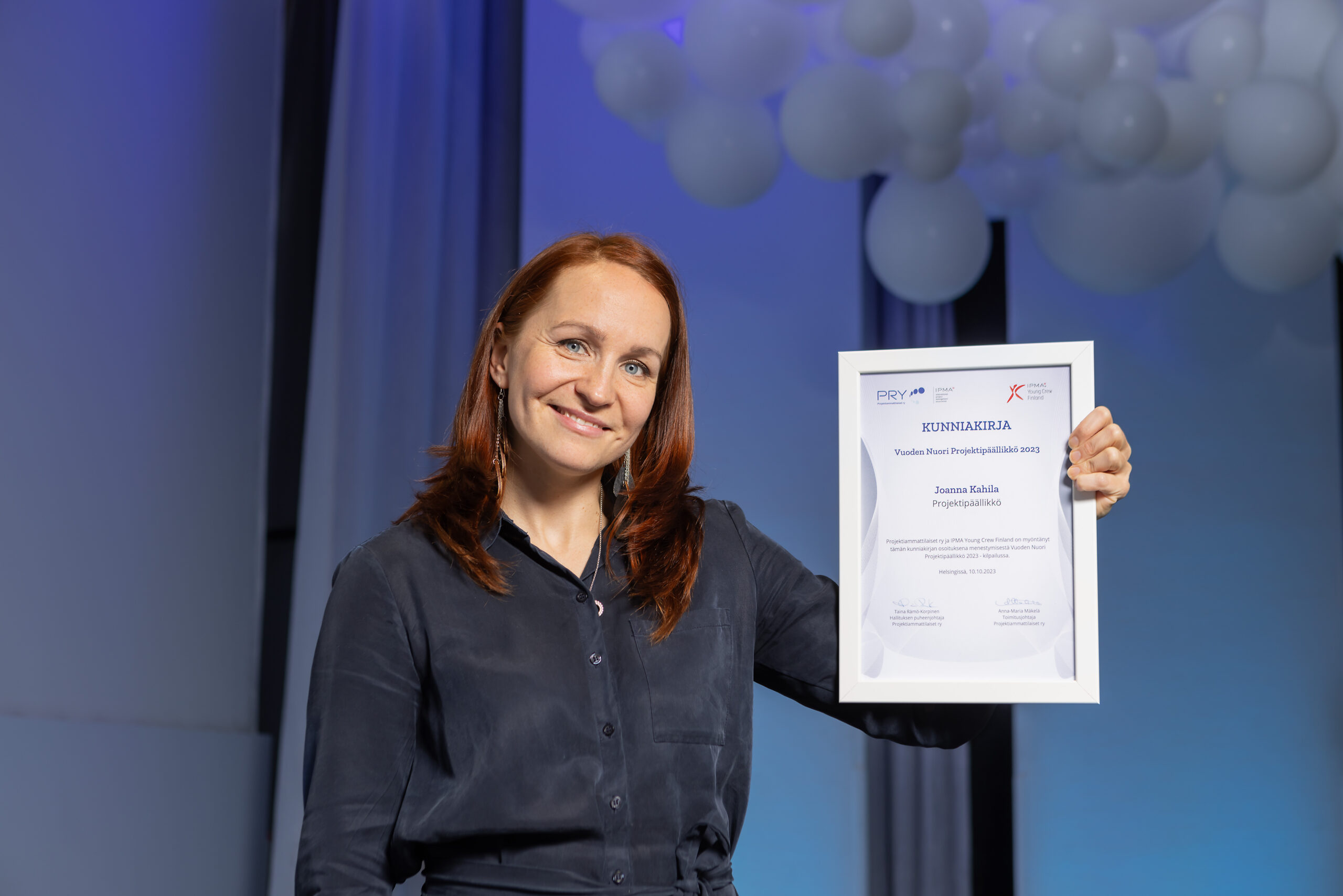The fifteen-kilometre Leppävaara – Kauklahti line will double the number of tracks from two to four by 2028. This means that slower local traffic and faster long-distance traffic can be separated into their own tracks in the future. When a train is delayed, delays will not be chained or piled up as they used to be after the renewal. The construction of additional tracks, which started at the turn of the year, has been on the drawing board and in the minds of residents since 2003. But there has been no slowdown in the preparation of the line project, as careful planning and decision-making take time.
Text by Kimmo Laakso
Photos Väylävirasto/Espoo light railway

The noise impacts of increased rail traffic were already identified in the Environmental Impact Assessment (EIA) at the end of 2013. The study identified noise zones that exceeded the daytime noise limit, particularly west of Kauniainen station, around the Kauniainen-Espoo border and west of Kilo station. The challenge in rail mixed traffic projects is to minimise disturbance and discomfort for passengers and train traffic. During construction, noise from rock blasting, pile driving and vibration will not go unnoticed.
“The fact is that construction will inevitably cause disruption. If we are as open as possible about when the work is being done and what the impact will be, a lot will be forgiven. It will be easier for us and hopefully easier for the residents,” says Tommi Rosenvall, project manager.
No secrets
Major rail projects often attract a large audience. If mistakes are made, the importance of careful communication is highlighted. This is the aspect of project management that the Espoo light rail project office in Leppävaara has chosen to focus on. The principle is that nothing is done in secret. All of the twenty or so employees on the contracting side of the project are involved in some aspects of the communication work. Their partner in communication matters is the management consultancy firm Pohjoisranta BWC, which draws up communication strategies as quickly as possible that are as illustrative as possible, be it maps or detours.
Communication is about managing the details, but also about the need to shift the public’s attention from short-term disadvantages to long-term benefits. According to the project appraisal submitted in 2014, the main benefits will be time cost savings in the Helsinki commuter area. There will also be a significant reduction in congestion and accident costs for vehicle traffic. When listening to the noise of an excavator, it is easy to forget that a functioning rail system improves the smoothness of the journey for motorists and reduces the risk of accidents on public roads. “The more people who start using the train, the better it serves car users,” Rosenvall says. The light rail service is designed to be metropolitan in frequency. Although journey times will increase by a few minutes as some trains will stop at each station after the renewal, preliminary studies show that this will not make a difference. For most passengers, the longer journey time is the lesser of two evils when it comes to getting on and off quickly.
Track projects are an endurance sport

When the funding decision for the light rail project came in 2020, Rosenvall moved from the Luumäki-Imatra line project to the Espoo light rail project manager, after working for about thirty years on major line projects across Finland.
The longest-running project I have been involved in is the Ostrobothnian Railway, which took thirteen years to overhaul,” says Rosenvall. If the schedule holds, the Espoo light rail line is due to be completed in 2028.
The long time span for planning and preparing rail and road projects is no surprise to those who have followed the development of passenger transport in the capital region. In the recent history of rail projects in Vantaa, for example, ideas for the Ring Line were first conceived as early as 1975, but it was only forty years later, in July 2015, when the line was inaugurated for passenger use. Compared to the Ring Road, the progression of Espoo’s light rail line from the preparatory work to the construction phase in twenty years seems almost rapid.
Getting the big picture
Soil surveys, alligator surveys, noise modelling and changes to individual protected sites, such as the Kauniainen station building, provide a wealth of information for project management. In addition to track work, bridge sites, electrical construction, safety equipment and tunnelling have to be managed. The project manager’s aid in this ocean of information is planning. Everything, from the equipment to the construction site, has been thought out in advance. Simulations have been used in the design phases of the project to determine, for example, the location and durability of the turnouts on the line. The project manager has to fight not to lose sight of the big picture, even when there are a lot of bits and pieces of information.
One of the aids to grasping the whole picture is a video presentation on the project office screen, which summarises the years of construction work on the light rail project in a few minutes. The presentation is based on 3D models and drone images created by the designers – no actual artificial intelligence is used. The Espoo light rail project boasts that it is the first railway project where all plans are based on computer models. Studies show that information modelling increases the ability of project managers to manage large construction projects. By simulating the structure in a virtual environment, it is easier to make crucial decisions for the project, as it is possible to visualise the details of the work at any stage of the design process.
Boundary economic conditions
After the track plan was completed in 2015, it was five years before the actual construction work could start. No funding was immediately allocated to start construction. “Initially, it may have been considered that this was also a land-use project. 2020 funding came specifically through the Land Use, Housing and Transport Agreement, where the state and the municipalities of Helsinki agreed to launch the project,” Rosenvall says.
In addition to the actual track works and related modifications, the project includes a number of individual projects fully funded by the cities, the most prominent of which is probably the baana, a cycle path to be built alongside the urban track, which has been given a nice-sounding name by the consultant jargon: a quality cycling corridor.
Of the rail-side areas, Kera in particular is likely to represent a cohesive urban structure based on rail transport, where logistics and industry are currently concentrated. With the completion of the urban railway line, the intention is to transform this area into a more residential and employment area. The light rail project will therefore have far-reaching effects on people’s employment, housing and leisure.
Rosenvall monitors the progress of the work from a screen in his office using the Infrakit site management software, which provides weekly updates via aerial photos. The levels of the cutting surfaces of the machines and even individual buckets are displayed on the screen in real time, making it possible to monitor whether the work is being completed as planned. “This is a monitoring tool,” says Rosenvall.
Before excavation could start, a species survey had to be carried out, which provided further expert information to help the decision making process: the invasive species it required to be found, the gorse, had to be removed and submitted for destruction by the contractors before excavation could start.
From the perspective of the Espoo light rail project office, the twenty years of preparation of the line project is not about slowing down, but about a democratic decision-making process involving a certain amount of slowness, diligence and data mining. “Along the way, you have to listen to the various stakeholders, residents and environmental organisations, that’s part of it,” says Rosenvall. In general, it would not be possible to manage a project of this size without consulting knowledgeable professionals in the field.
Espoo City Circuit
- Espoo light rail will increase the number of tracks on the Leppävaara-Kauklahti section from two to four, allowing slower local traffic and faster long-distance traffic to be separated on different tracks. This will reduce disruption to train services and improve punctuality along the entire Helsinki-Turku route. The Espoo light rail line is part of the Helsinki-Turku high-speed rail link.
- Timeframe: 2020-2028
- Cost: around €330 million
- Responsible parties: the Finnish Transport Agency, the Cities of Espoo and Kauniainen


